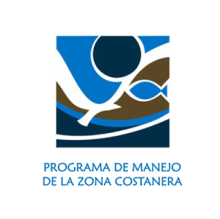Análisis espacial y económico: comunidades, infraestructura y biodiversidad en riesgo
The coasts of Puerto Rico hosts habitats, communities, infrastructure and centers of economic, historical and cultural activity that provide fundamental services to the country. Current risksRisksA combination of the probability of an event occurring and the frequency with which it occurs and the magnitude of its negative consequences. More such as flood and coastal erosion, combined with the effects of climate changeClimate changeRefers to the long-term changes in the Earth’s climate that are warming the atmosphere, ocean and land. Climate change is affecting the balance of ecosystems that support life and biodiversity, and impacting health. It also causes more extreme weather events, such as more intense and/or frequent hurricanes, floods, heat waves,... More, particularly sea level riseSea level riseIncrease in the level of the world's oceans due to the effects of global warming. Changes in sea level are caused primarily by thermal expansion caused by warming of the ocean (since water expands as it warms) and increased melting of land-based ice, such as glaciers and ice sheets. More, have consequences on economic activity and the quality of life of the population.
Knowledge of the potential consequences associated with these risksRisksA combination of the probability of an event occurring and the frequency with which it occurs and the magnitude of its negative consequences. More serves as a decision-making tool for adaptation. The Office of the Coastal Zone and Climate ChangeClimate changeRefers to the long-term changes in the Earth’s climate that are warming the atmosphere, ocean and land. Climate change is affecting the balance of ecosystems that support life and biodiversity, and impacting health. It also causes more extreme weather events, such as more intense and/or frequent hurricanes, floods, heat waves,... More Program of the Department of Natural and Environmental Resources (DRNA) has identified the need to generate data on communities, infrastructure and biodiversity at risk and, on that basis, estimate, to the extent possible, their economic value. This type of exercise allows us to show how much the assets on the coast and economic activity would be affected, if adequate adaptation measures are not implemented.
This project has three main objectives:
1. Spatial analysis: Generate a general profile of the communities, infrastructure and ecosystems in the coastal zone and their relationship with the coastal municipalities and the rest of Puerto Rico.
2. Risk exposure: Generate a profile of coastal communities, infrastructure and biodiversity located in areas of climate risksRisksA combination of the probability of an event occurring and the frequency with which it occurs and the magnitude of its negative consequences. More such as floodingFloodingTemporary overflow of water into land that is normally dry. Flooding can be triggered by rain, tides, and storm surge events, overflowing rivers, streams and other bodies of surface water and sinkholes. They can also be caused by infrastructure failures, such as dam breaks. More, including sea level riseSea level riseIncrease in the level of the world's oceans due to the effects of global warming. Changes in sea level are caused primarily by thermal expansion caused by warming of the ocean (since water expands as it warms) and increased melting of land-based ice, such as glaciers and ice sheets. More and projected coastal erosion.
3. Economic value: Estimate the economic value of assets located in areas susceptible to coastal and riparian floodingFloodingTemporary overflow of water into land that is normally dry. Flooding can be triggered by rain, tides, and storm surge events, overflowing rivers, streams and other bodies of surface water and sinkholes. They can also be caused by infrastructure failures, such as dam breaks. More, sea level riseSea level riseIncrease in the level of the world's oceans due to the effects of global warming. Changes in sea level are caused primarily by thermal expansion caused by warming of the ocean (since water expands as it warms) and increased melting of land-based ice, such as glaciers and ice sheets. More, and, projected coastal erosion.
